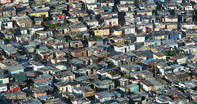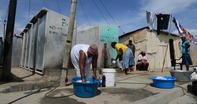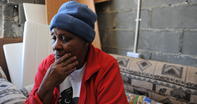Before the Townships

Cape Town was a completely different place in those days. Today, there are settlements all the way from the city across the great stretch of land that eventually reaches the Helderberg mountains, on the far side of False Bay. But all those years ago, there was nothing — no Gugulethu, Khayelitsha or Mitchells Plain, where millions of people live now.
There was just bush, stretching on into the distance. I lived with my mother in District Six in the central city. She was a domestic worker in Kloof Flats in Kloof Nek Road. Sometimes she did sleep-ins at the house of her employer, who was called Mrs Orren. She was a good woman, Mrs Orren — she was the one who taught me to sew and to knit the gloves and socks and jerseys I still make today.
A Practical Education

I didn't go to school. My mother used to say, 'I don't want you to go to coloured schools.' She didn't want me to play with coloured children either. I didn’t understand why not. So every day I would go to work with her and I spent my time tidying the house, sweeping floors, cleaning bathrooms.
I liked that, because it felt like the right thing to do. My grandmother had always taught me that girls shouldn't sit idle all day and we must work at home because, she said, 'One day you will get married and you need to know how to have your own house, and be a mother.'
District Six

District Six became very famous after the apartheid authorities bulldozed all the houses down and forced everyone out, because they didn't want any black or coloured people near the city centre.
This didn't affect me, because by this time I was already married and living with my husband. But it was very hard for my mother. She had to go and live far from work and it took three bus trips, which meant hours of travelling, to get there every day.
By Jo-Anne Smetherham